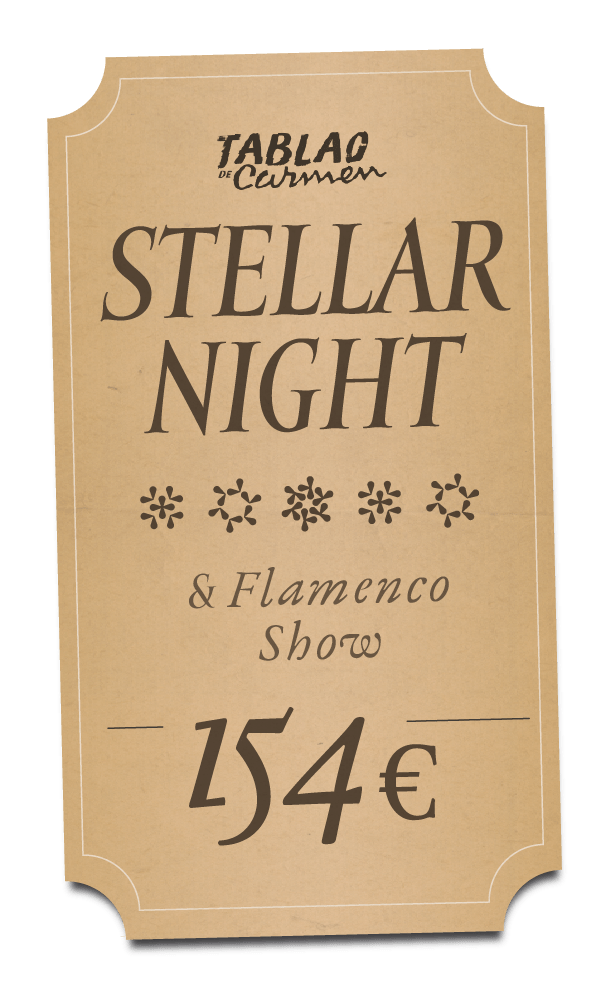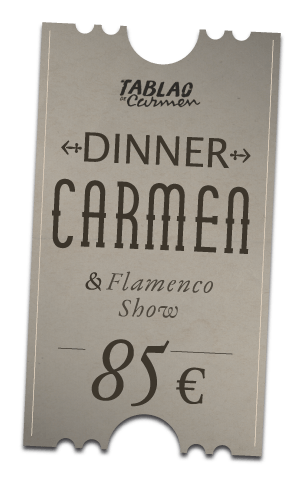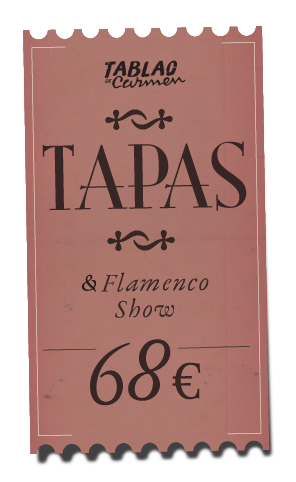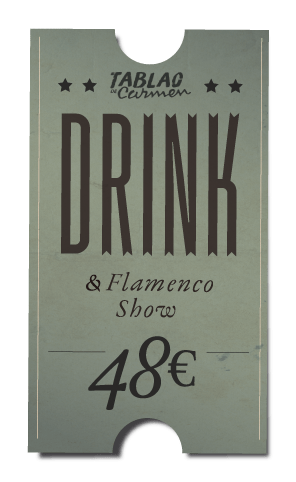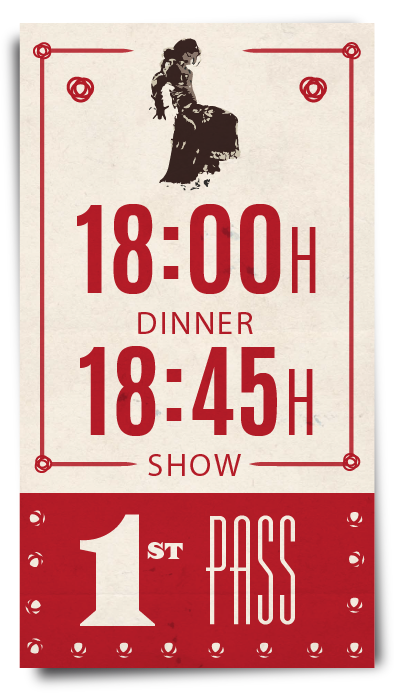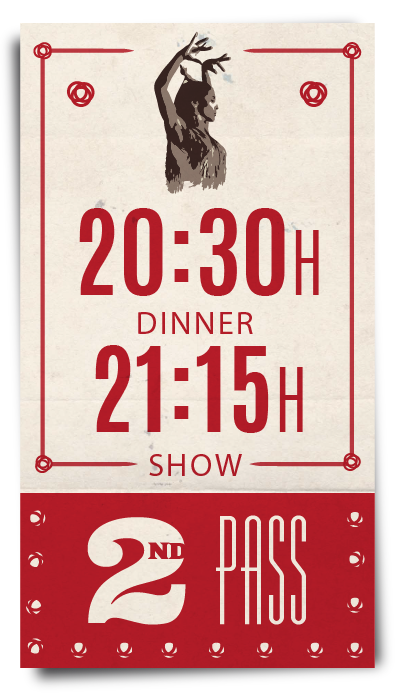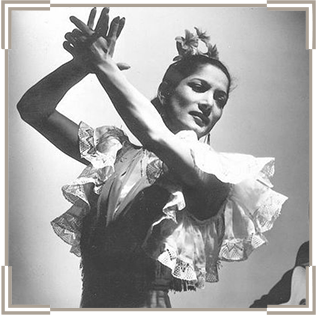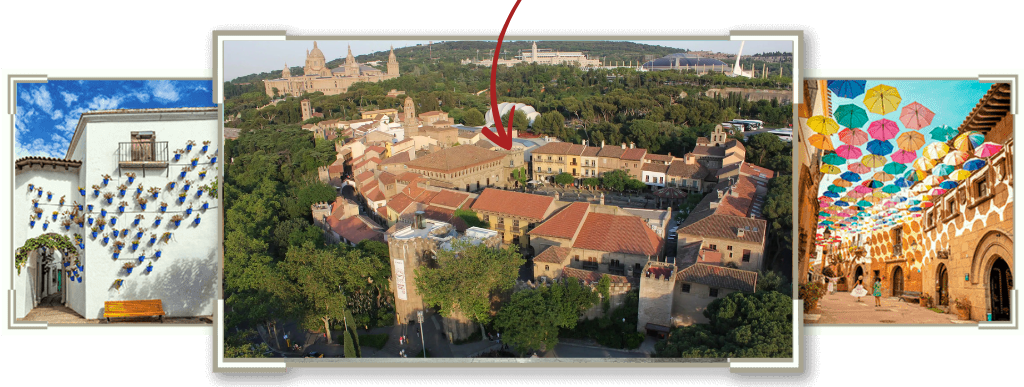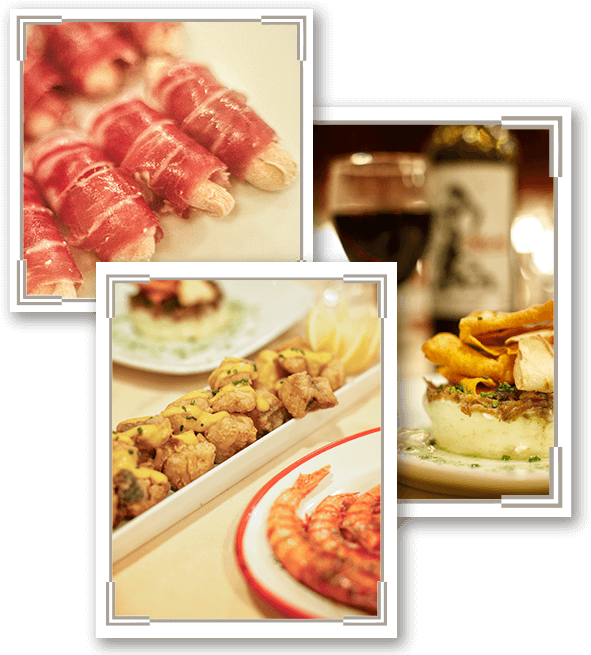
You can access the Tablao forty-five minutes before the show and begin enjoying Rosalías cooking, who bringsthe best flavors from Jaen in the south of Spain to the Andalusian corner within the Poble Espanyol (Spanish Village): marinated fish, Spanish ham, eggplants with honey, croquetas,all while enjoying with cold sangría or wine from La Rioja region.
You can choose among our 4 ticket options, each with a different menu, ranging from a tapas dinner to an “Estrella” gourmet tasting. We also offer vegan, vegetarian, and allergy-friendly alternatives.

